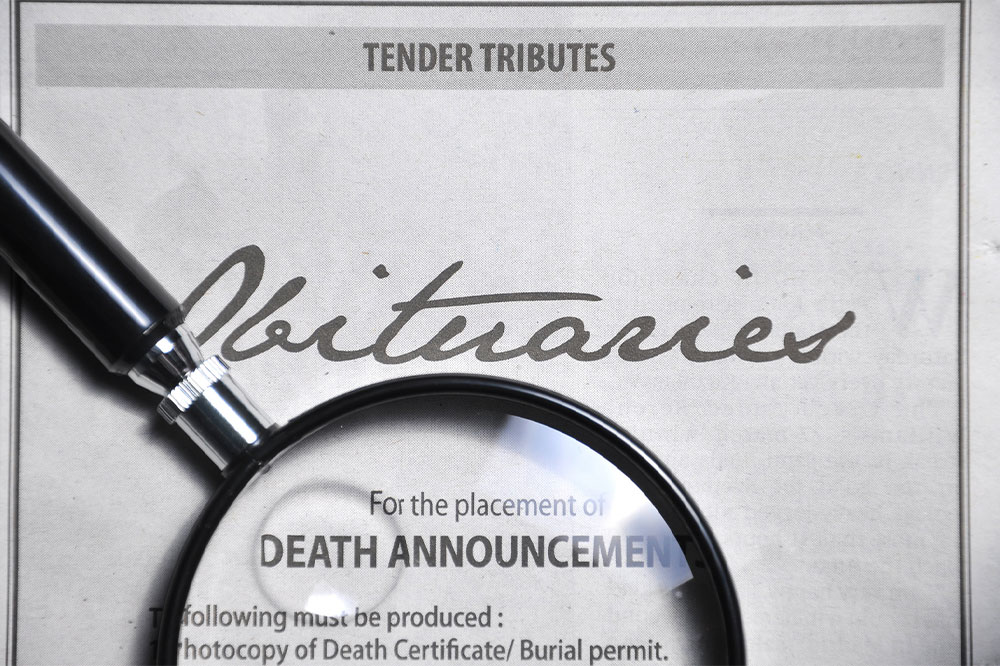Tips to Compose a Proper Obituary
Losing someone always leaves a void behind. One way people find comfort is by penning down their feelings about the dearly departed. It often contains information about the person’s family and genealogy, along with the positive impact that they have had. It also helps others remember them. Obituary records are a collection of obituaries from hundreds of publishing sources. They scan through the sites regularly and extract the relevant information and maintain the database.
What are obituaries?
When speaking about the word itself, obituary finds its roots in the Latin word obitus, which translates to “death.” An obituary can be described as a notice of death, which describes the life of the recently deceased.

If a person is a well-known individual, the local newspaper would typically print the obituary highlighting the person’s accomplishments. In contrast, in other cases, either the family or anyone who is close to the person may choose to pen down their thoughts and feelings. These local newspapers also act as an obituary directory of all the people who passed away. There are also multiple online obituary records where such records are maintained.
What all should you add while writing an obituary?
Contrary to popular belief, obituaries don’t necessarily have to be long and exceptionally detailed. Remember, the more details and personal anecdotes you add, the more value it will add for both, people who knew the dearly departed and those who did not have a chance to know them.
It is often suggested to stick to a short paragraph or a few short lines when addressing someone’s finances in the newspapers, whereas sharing a longer, more detailed one on online obituary record-keeping directories is okay.
A few of the points to add to the obituary are the person’s name, age, residence, date of death, place of death, and cause of death. After that, the place of birth, education, career, and society details should be available in the introductory paragraph, giving an overview of the reason for writing it. Following the basic details, including the person’s education and work background, will help readers form a connection with the deceased. One can also include a mention of the predeceased family members and the surviving family members. This will help humanize the person by highlighting the connections they had over the span of their lifetime. The names and connections will also help give a clearer picture of the individual and make them seem a part of the community.
Last but not least, include details on services and burial, calling hours, and any information on donations and contributions if applicable.
Finish off the obituary by asking people to come and pay their regards while also specifying the appropriate time to call to give their condolences. One can also ask for contributions and donations to help with the financial implications after the person passes away while also softening the blow for the surviving family members. One can even mention an organization or a cause that was important to the deceased and ask people for a contribution on their behalf.
Once all the details are noted down, arrange them in chronological order. Starting from birth all the way up to their death. When any individual searches for obituary records, they should be able to find the correct one easily if the right format is maintained.
It is a well-documented fact that putting pen to paper and writing the obituary is a cathartic process and is a good opportunity to take some time and think about the positive experiences with your loved ones.
It can be difficult yet rewarding in the end, not only for the person writing it but also for the friends and family who will be on their end, reading it. It will also be a valuable piece of information for future genealogists. Senior citizens who have lost touch with their friends and acquaintances also lookup the obituary section regularly to ensure they don’t miss the news of someone’s passing away.
Hence helping maintain the public obituary record is a crucial responsibility. You are essentially responsible for how future generations will perceive and interpret the deceased person’s existence. The amount of information there is in an obituary is a minefield of invaluable genealogical and biographical information. For many of our ancestors, the obituary is merely a biographical outline of the individual.
Along with the basic biological information, an obituary record is also a manifesto of a person’s death. It provides a concrete basis for research. To find obituaries for free, it is important to go through all the likely resources, like newspapers. Many cities have more than one local newspaper carrying out the obituary listing, so it is important to scan through them all.
In order to cover up all the basics during your first time writing an obituary, the best strategy is to use a bunch of different tools, including online public obituary records and historical newspaper collections. You can also consider looking into offline research resources like the local libraries and newspaper offices.
